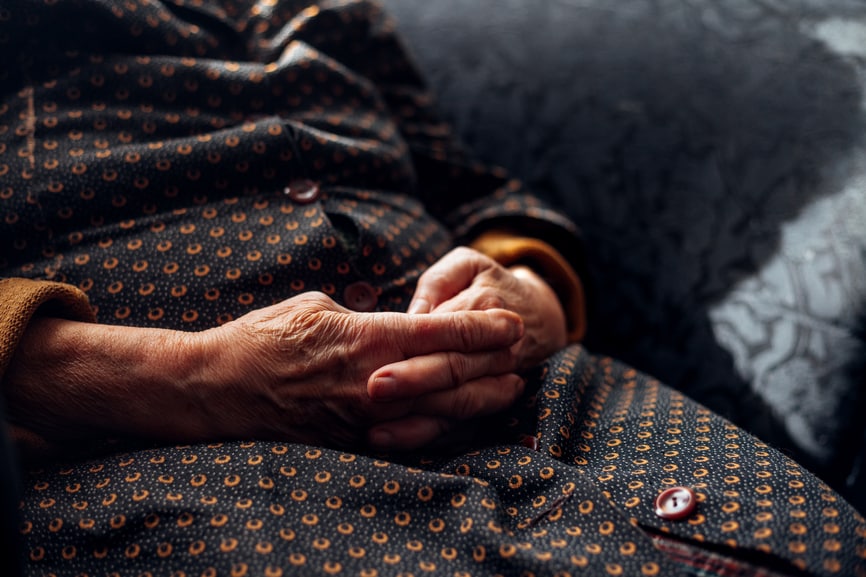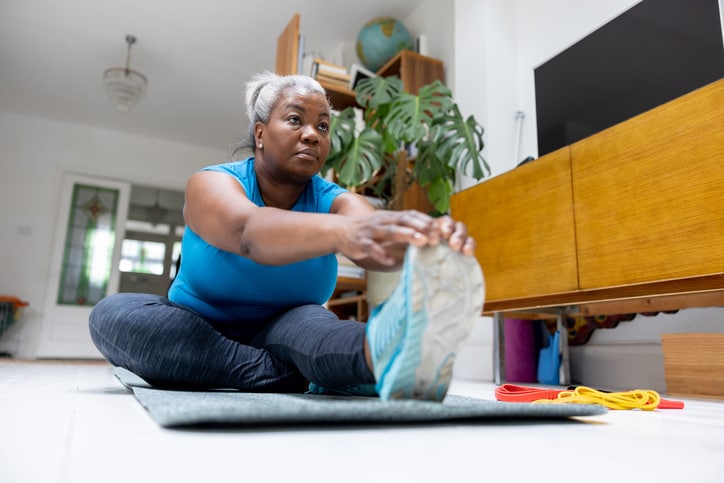Dolls can be a “miracle” for some dementia patients, but try before you buy.
For Rose, dementia brought troubling problems along with memory loss. She was constantly agitated, despite a doctor-prescribed regimen of sedatives. Though irritable, she wasn’t alert. Rose had little quality of life — until her adult daughter brought a doll to her assisted living home. Instead of wandering the halls looking for an exit, Rose carried the doll with her everywhere, visiting other residents in her community with “her granddaughter” and happily changing the doll’s tiny outfits. Her levels of anxiety disappeared to such an extent it was decided she no longer needed her Ativan and hydromorphone. Even when she didn’t have the doll with her, her good mood remained for hours.
“We call it a miracle sometimes,” said John Schmid, co-founder of Best Alzheimer’s Products.
Schmid said he has repeatedly seen how dolls have aided with dementia-related aggression, agitation, and restlessness.
“You won’t change the disease, but you can improve quality of life,” he said.
Still, dolls are not for every patient or every family. Here are nine “dos and don’ts” to consider before giving a doll to your loved one.
1. Don’t Dismiss It
The thought of watching your elderly loved one carry around a doll can ignite strong emotions.
“Some of the primary caregivers, often adult children, didn’t want to see their mothers playing with dolls,” said Arrie Beasley, of the Benjamin Rose Adult Day Program in Cleveland Heights, Ohio, noting that parents fear infantilizing their parents. “It even made some of them angry, even though their parents seemed happier with the dolls always.”
Before dismissing a doll as babyish, remember that you’re not the one who may benefit.
“It’s not about us. It’s about them and what they’ll enjoy,” said Molly Fogel, Director of Educational and Social Services for the Alzheimer’s Foundation of America.
2. Do Know That Dolls Are in a Category All Their Own
While adding a cat, soft sweater, or blanket to your toolbox may help, there seems to be something about a realistic baby doll that is hard to replicate.
“As a species, we are hardwired to contribute,” Gibbons said. “By giving a diagnosed loved one a doll, they can feel they are contributing to the wellbeing of that ‘baby.'”
“We have alternatives to dolls, such as stuffed animals that look real, but it’s not a doll,” Schmid said. “A doll will bring out nurturing instincts more than anything else will, and we’ve observed that these people living with dementia spend more time with a doll than a real animal or a stuffed animal.”
3. Do Try It Out the Right Way
Never thrust a doll at a person living with dementia and walk away. Just as any adult might feel overwhelmed if a real baby were thrust into their lap, the person with dementia may feel the same pressure to care for the doll. Schmid suggested leaving the doll in a shared living space where it can be discovered but doesn’t feel like a responsibility or even borrowing a doll for a “visit” before committing to one.
“Put it in a chair and let them find it,” Schmid said. “If after three days they don’t pick it up, maybe it’s not for them.”
4. Do Get the Right Doll
Knowing the preferences and interests of the person with dementia can make choosing the right doll easier.
“Your child’s doll, like a Cabbage Patch Kid, might not be the right fit,” Fogel said. “The most important thing is making sure we’re not treating them like our children.”
The more realistic the doll, especially dolls with soft instead of hard bodies, the more enthusiasm it usually receives. Schmid said his site’s most expensive doll, which is hyper-realistic with hair that’s micro-rooted and made of alpaca as well as glass beads lending a realistic weight to the doll, inspired one woman with dementia (whom an employee said had previously been mute) to pepper him with questions about “his grandson” while he was visiting an assisted living home.
“But when she saw the doll my wife was holding, a much less expensive doll, she said, ‘Oh look, she brought her doll,’” he said. “She could tell a difference.”
He added that if a doll is presented when a person is in the advanced stages of dementia, “it’s maybe too late to get the real benefits, so offer them something soft and cuddly.”
5. Don’t Forget Grandpa
While women are often seen as the most likely to respond to a doll, men have been known to want them, as well.
“You will find more resistance to the idea from caregivers if a man is involved, but be persistent,” Schmid said. “I’ve seen so much benefit.”
Like women, men may have fond memories of when their own children were young and may also be candidates for larger dolls that look like older children.
6. Don’t Force It
Just as some adults have no interest in children, dolls aren’t always a hit with those who have dementia regardless of what stage of the disease they might be in.
“A family may say, ‘Oh, dolls work, I’ll get one for Mom,’ but they need to ask, ‘Has Mom ever talked about missing having young children or has she shown special attention to children on TV? Has Dad been reminiscing about cycling through the neighborhood with the kids?’” Fogel said. “There are clues that let you know.”
People with dementia who ignore the doll or don’t pick it up, even after seeing it repeatedly, probably aren’t interested.
7. Do Prepare for Potential Problems
Even if Grandma eagerly accepts a doll, it’s important to know that there may be bumps in the road ahead. If the person with dementia lives in an assisted living residence, she may end up in a tussle with other residents who confuse her doll with their own. She may try to feed the doll, or, worst of all, misplace it. These issues may create more stress instead of less, and it’s important to make sure staff (for those in assisted living) and other family members understand the importance of the doll.
Remember that the doll requires care and maintenance.
“Keep the dolls tidy, clean, and store them nicely in a crib or pram or out of sight,” said Professor June Andrews, FRCN and author of “Dementia: The One Stop Guide.” “It is horrific for anyone to see a dirty, naked ‘baby’ down the back of a sofa.”
8. Do Weigh the Benefits
Though there are few studies about doll use by those with dementia, which is considered a self-administered therapy, stories of people with dementia feeling happier, more needed and more connected abound. Given that this can sometimes be achieved with nothing more than a doll, some clothes, and a crib, it seems like an easy decision.
“While people with dementia who are higher functioning and their family members may feel awkward about using comfort dolls or pets until technology give us real (and affordable) robots to interact with, these stand-ins are necessary to mitigate unnecessary suffering,” said Brenda Avadian, who has covered caregiving in TheCaregiversVoice.com for 19 years.
9. Do Know That There Are Other Good Options
If you feel a great deal of resistance to giving your loved one a doll, there are other ways to accomplish many of the same goals.
“Over the last 10 years, my experience with caregivers and their diagnosed loved ones has shown that anything that is comforting, soothing, and meaningful to the person with Alzheimer’s is worth a try,” said TV personality and health advocate Leeza Gibbons.
Consider a soft blanket or cozy sweater to provide a similar tactile experience.





